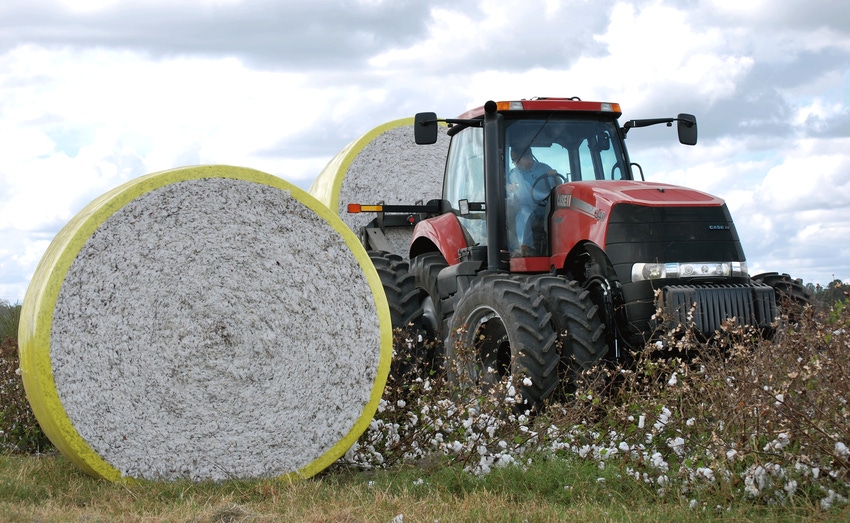
It was a while coming, but Agriculture Secretary Tom Vilsack made good on his promise USDA would provide a “meaningful” amount of ginning cost-share assistance to eligible cotton producers.
Under the program, announced in Washington June 6, USDA’s Farm Service Agency is expected to begin sign-up for an estimated $300 million in payments on June 20. Payments will be processed as applications are received and are expected to begin in July.
“Today’s announcement shows USDA continues to stand with America’s cotton producers and our rural communities,” said Vilsack. “The Cotton Ginning Cost Share program will offer meaningful, timely and targeted assistance to cotton growers to help with their anticipated ginning costs and to facilitate marketing.”
The secretary said the cost-share program will provide, on average, approximately 60 percent more assistance per farm and per producer than the Cotton Transition Assistance Program that helped bridge the gap between the old and new farm bills in 2014.
Cotton Ginning Cost Share Payments will be calculated by multiplying certified acres times regional payment rate times a producer’s share of the crop. (Regional payment rates will be as follows: Southeast - $47.44 per acre; Mid-South - $56.26/acre; Southwest - $36.97/acre; and West - $97.41/acre. The rates reflect differences in average cost of ginning.)
Cost share payments are capped at $40,000 per individual or entity. Cost share program payments do not count against the 2014 farm bill payment limitations.
To be eligible for a cost share program payment, each applicant is required to be a person or legal entity who was actively engaged in farming in 2015 and who complies with requirements including, but not limited to, those pertaining to highly erodible land conservation and wetland conservation provisions, commonly referred to as the conservation compliance provisions. A producer’s three-year average adjusted gross income may not exceed $900,000 in order to be eligible for the cost share payments.
Program sign-up period: June 20, 2016 to August 5, 2016. Payments should be available shortly following an individual completing the sign-up process.
Cotton industry thankful for assistance
National Cotton Council officials, who began working on providing some form of assistance to producers last fall, expressed sincere gratitude to Vilsack for providing the one-time $300 million program that offsets a portion of a cotton producer’s 2015 crop season ginning costs.
“The U.S. cotton industry commends Secretary Vilsack for his efforts on making possible a program that will provide much-needed marketing assistance for our nation’s cotton producers,” NCC Chairman Shane Stephens said.
The Mississippi cotton warehouseman said although this program will provide direct marketing assistance to producers, it also will help stabilize a seven sector industry that provides employment for some 125,000 Americans and generates more than $75 billion in annual economic activity.
“Our producers appreciate Secretary’s Vilsack’s efforts in providing marketing assistance to a commodity that is suffering a serious decline in market revenue partly due to heavily-subsidized foreign competition,” said American Cotton Producers Chairman Mike Tate of Alabama, “with no signs of the commodity prices reaching the level needed to offset their production costs.
“The industry will continue to work with Congress and USDA to seek long-term policy solutions that will provide stability for the cotton industry.” The NCC has been working with Congress to develop legislation for designating cottonseed as an “other oilseed” for farm program payment purposes.
Other national and regional farm organizations joined in praising the announcement.
“Farm Bureau commends Secretary Vilsack’s decision to provide a temporary Agriculture Department program to help U.S. cotton farmers defray processing costs, giving them hope as they face some of the most difficult market conditions in more than a decade,” said Zippy Duvall, president of the American Farm Bureau Federation.
“We are especially appreciative that Secretary Vilsack took the time to work with us, the National Cotton Council and others to arrive at this special, one-time arrangement without requiring legislative action. This is a clear example of what we can accomplish when we work together. Our cotton farmers and the rural businesses they partner with will be better off because USDA took action to address a serious market downturn in their industry.”
Plains Cotton Growers, Inc., which represents one of the hardest hit areas of the Cotton Belt, commended USDA for creating the Cotton Ginning Cost-Share program.
“We greatly appreciate U.S. Secretary of Agriculture Tom Vilsack and the USDA for listening to the concerns of cotton producers and coming up with a viable short-term solution that will help us face some of our challenges,” PCG President Johnie Reed, a cotton producer from Kress, said.
“We had hoped for some flexibility in the payment limit, but we are grateful for the assistance, because our producers certainly need it,” Reed said. “We recognize that this is a program for the near term, and we remain committed to working with Congress and others in trying to establish cottonseed as an ‘other oilseed’ under Title I of the 2014 Farm Bill, which would provide long-term stability for our industry.”
About the Author(s)
You May Also Like






